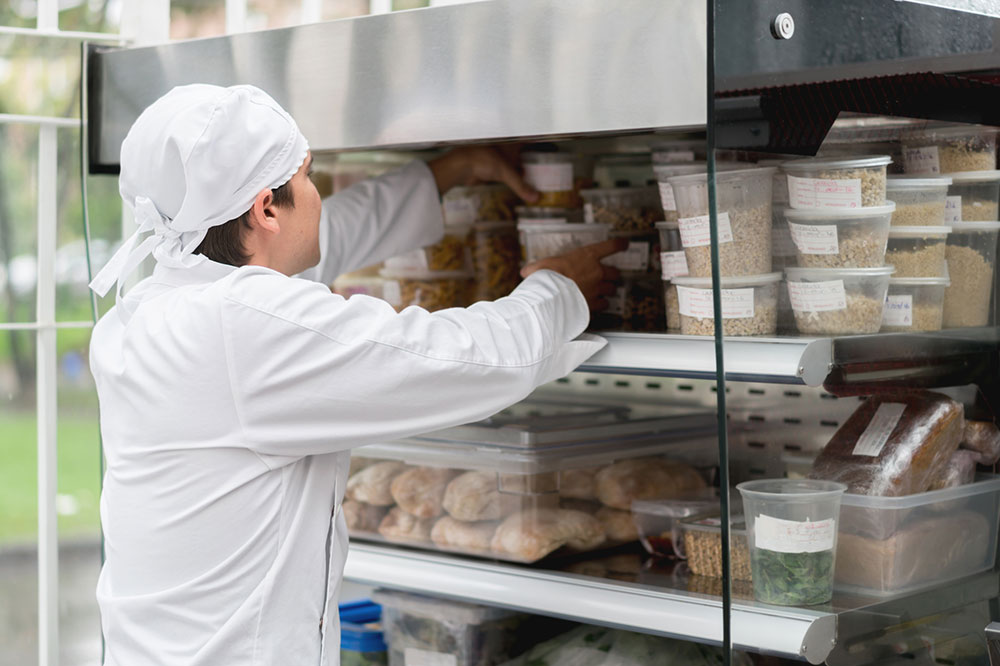Restaurant inventory management is one of the trickier elements of running a kitchen, simply because there are so many ways that small mistakes can affect your bottom line. If your manager under-orders, you risk having to “86” menu items during your busiest shifts, which can leave your restaurant guests with a bad impression of your service and menu. If your manager over-orders, you risk that extra product spoiling before it can be used. That’s money being tossed away.
Your inventory needs to make sense for your menu and your restaurant’s regular intake. And keeping track of your inventory can be further complicated by poor employee behavior like sloppy prep waste, theft, and not sticking to FIFO (first in, first out). Part of restaurant inventory management is being familiar enough with what your standard inventory should look like that managers can spot when things are wrong — and get to the bottom of the problem right away.
Unfortunately, a lot of traditional inventory management systems still leave managers in the dark. That can only lead to mistakes, miscommunication, and hidden problems going unaddressed. When it comes down to it, you can’t just rely on guesswork to manage your inventory.
If your management team is still using a clipboard and spreadsheet to track inventory, they’re not taking advantage of the new, more efficient inventory management technology on the market. Even inventory management software from 10 years ago doesn’t have many of the new features today’s products offer to make your business run more smoothly. Yes, there’s upfront investment involved with upgrading your old inventory process, but the massive difference it could make for your operational efficiency can’t be ignored.
Inventory Control
The main purpose of restaurant inventory management technology is to help you run your regular inventory control. You want a program to keep track of everything from your various suppliers and prices — and food inventory itself. Real-time tracking will help you avoid having to manually update a spreadsheet every time something changes.

Recipe Costing Tools
Some modern restaurant inventory management tools come with recipe costing. They take the supplier product prices you’ve already entered into the system, calculate food cost for any given item on your menu, and then help you price the plate competitively. If you’ve struggled balancing your menu prices in the past, this could be huge for your bottom line.
Vendor Management
Part of upgrading to new tech is about streamlining the ins and outs of your kitchen, and that includes improving your vendor relationships. Many of the inventory programs on the market allow uploading vendor invoice, auditing vendor prices, and the option to create automatic vendor orders when the program notices that certain ingredients are low.
Inventory Reports
As with other management systems, another benefit of modern restaurant inventory management systems is the wealth of data that comes with using it. Being able to look at and analyze inventory reports should give you a better understanding of what you’re buying and how you should adjust your ordering (and menu choices) for the future.
Inventory Variance
Any restaurant inventory management system you purchase should make it easier to compare where you expect your inventory to be (based on your recipes and the number of items sold) versus what your inventory actually is. From there, you can investigate what issues in the kitchen are causing the difference in numbers, whether it’s over-portioning, theft, prep waste, or cooking mistakes that lead to do-overs. Ultimately, keeping on top of these variances will improve your processes in the kitchen and save you money.

Menu Engineering Charts
Keep an eye out for any programs that let you chart out your menu items in terms of performance. This can help you figure out your stars, puzzles, plow horses, and dogs. You can see which items are profitable best-sellers, and ones that might be better off not on your menu at all.
Easy Training Demos
Training will be important for any inventory program you choose. After all, your current managers need to be properly trained for the new system upon installation, but also anticipate the need to train staff you promote to manager later. As great as it is to have lots of helpful features to work with in the software, it’s also crucial for there to be an comfortable learning curve so your managers can effectively use those features.
Device Compatibility
With the rise of tablets and smartphones, any restaurant tech you purchase today should be able to move with you, wherever you’re working in the kitchen. Modern inventory management systems should be able to sync up with your office’s computer and every mobile device your managers use professionally. Users should be able to stand in the walk-in (or talk to the vendor at their truck) with their phone or tablet and go over the inventory easily — and automatically sync up with all devices to make sure nothing gets missed.
Want to hone in on other operational trends this year? Download our free eBook “Restaurant Trends in 2018” today!






